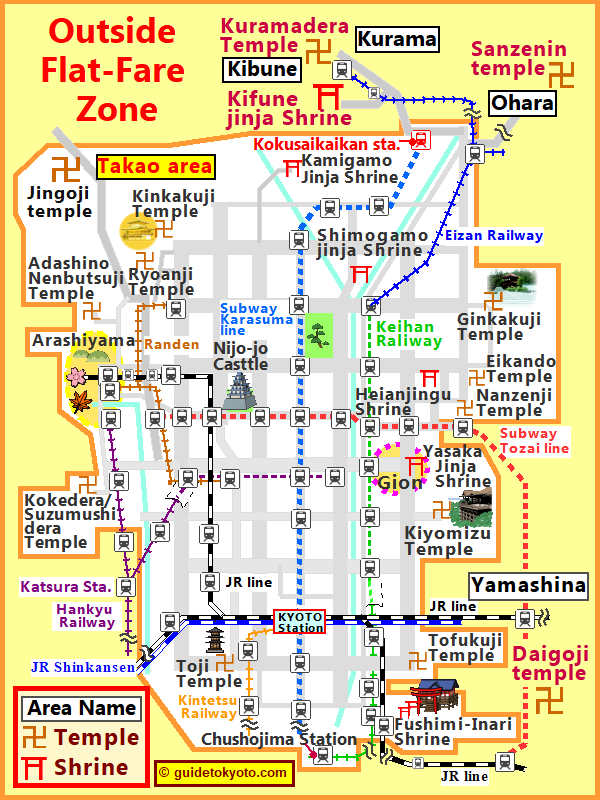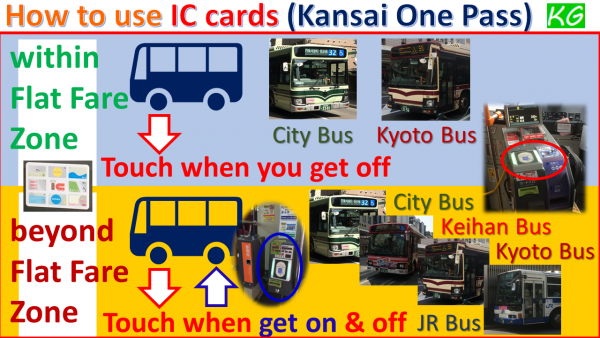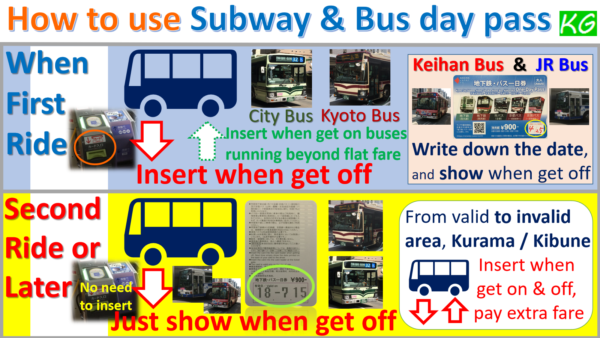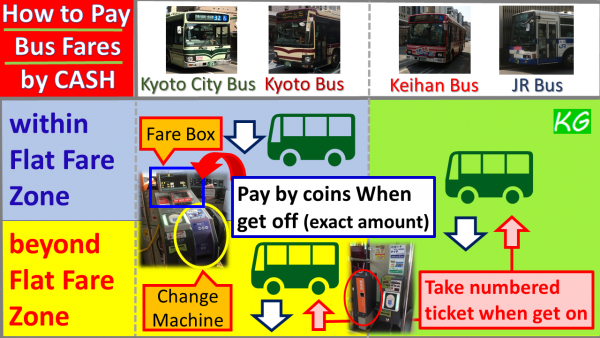Local Bus Fares in Kyoto
Advertisements
1. How much is a bus fare ?
1-1 Within Flat Fare Zone
1-2 Beyond the Flat Fare Zone2. How to pay a bus fare ?
2-1 IC cards
2-2 Day Passes
2-3 Cash
1. How much is a bus fare in Kyoto ?
1-1 Flat Fare Zone
A bus fare in Kyoto depends on areas whether your destination is within Flat Fare Zone or not.
Flat Fare Zone means that no matter where you get off, and no matter which bus company you ride (actualy 4 different bus companies operated in Kyoto such as Kyoto City Bus, Kyoto Bus, Keihan Bus and west JR bus), the fare is ¥230 for an adult / ¥120 for a child (6 – 11 yares old) per ride within the zone.
Of course, extra fare is needed if you ride beyond the zone.
In fact, most of attractions are located within the Flat Fare Zone.
For example, Arashiyama, Kinkakuji temple, Ginkakuji temple, Fushimi-inari shrine, Kiyomizu temple, Gion, Nijo castle, Ryoanji temple are within the flat fare zone. So if your destination is typically famed place in kyoto, the fare must be ¥230 per ride.
From Mar. 2021, Takao area having Jingoji temple or Kouzanji temple turnds into the Flat Fare Zone.
The fare for limited express buses is an exception. It is ¥500. (Bus ExNo.100 , ExNo.101 )
The map above shows the Flat Fare Zone with some famous spots, please check.
1-2 Beyond the Flat Fare Zone
If you ride a bus beyond the Flat Fare Zone, the fare gets higher depending on the distance.
Famous attractions or areas located outside the zone, for example, are…
•Sanzenin Temple / Ohara area
•Kuramadera Temple / Kurama area
•Kifune Shrine / Kibune area
•Daigoji Temple / Yamashina area
The map above shows those attractions and areas located outside Flat Fare Zone, so please check.
♦ Kyoto station
⇔ Sanzenin Temple / Ohara area (¥630 / ¥320)
♦ Kyoto station
⇔ Daigoji Temple / Yamashina area (¥280 / ¥140)
♦ Subway Kokusai-kaikan station
⇔ Kifune shrine via Eizan Railway Kibune-guchi Sta. bus stop (¥510 / ¥260)
♦Subway Kokusaikaikan station
⇔ Kuramadera temple (¥340 / ¥170)
Advertisements





